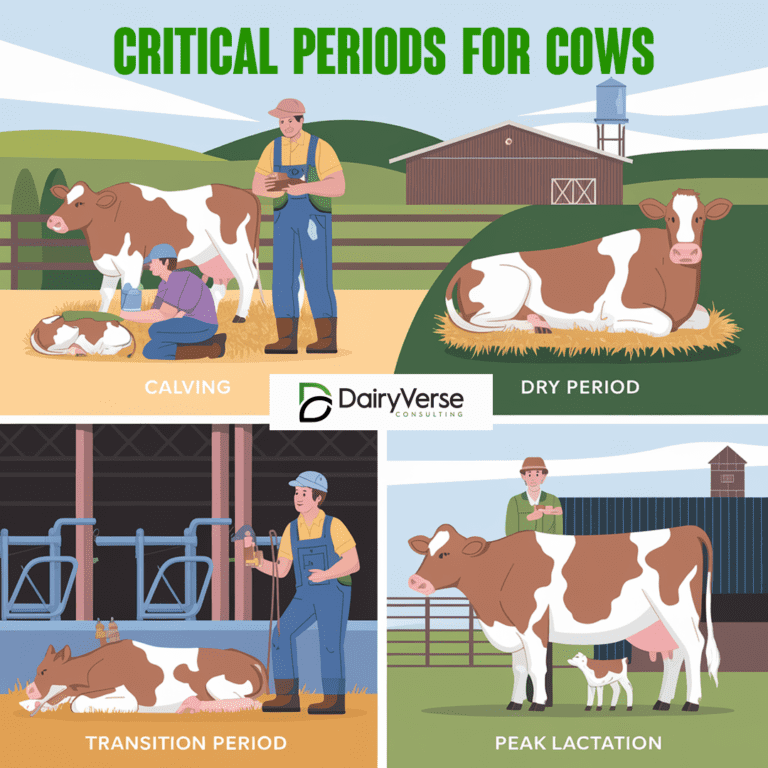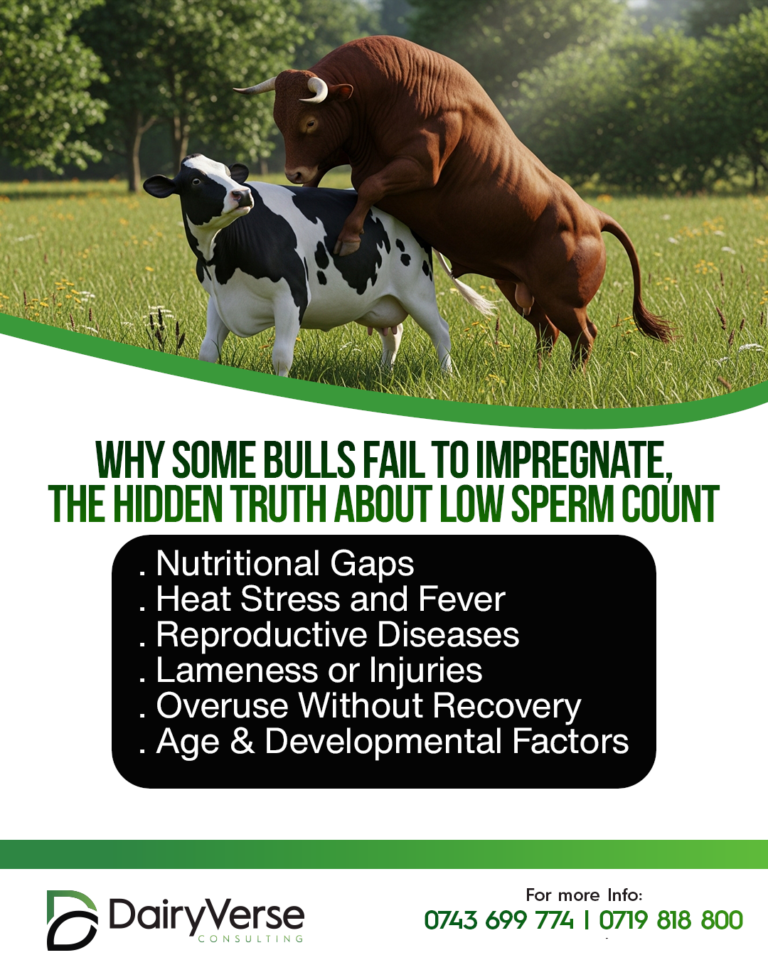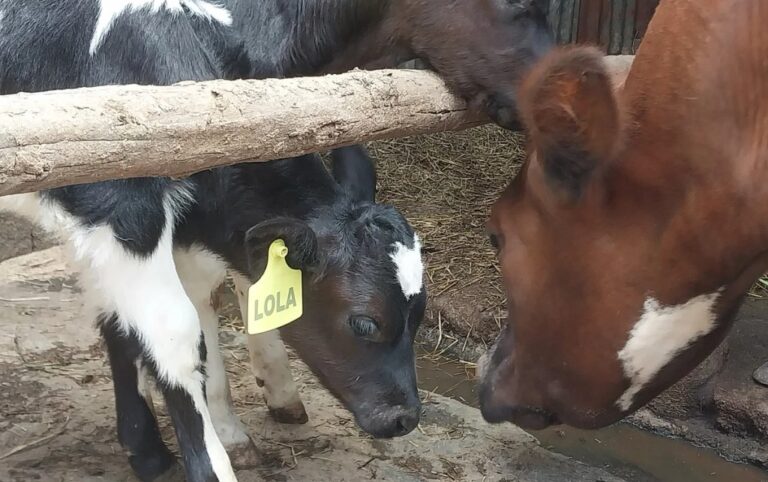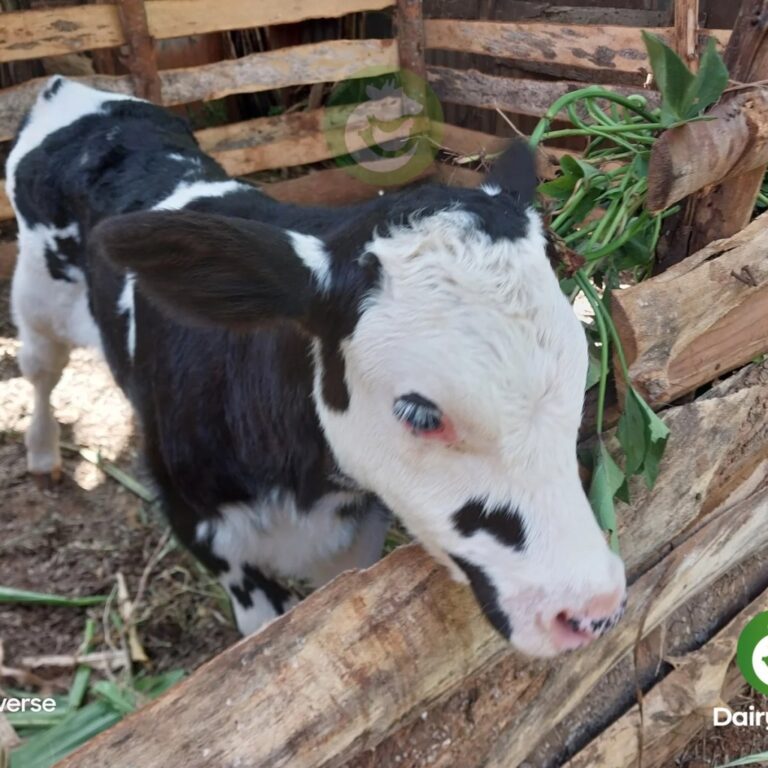Understanding the Estrous Cycle of the Cow, A Key to Better Dairy Reproduction
In dairy farming, reproductive efficiency is one of the pillars of productivity and profitability. Understanding the estrous cycle of the cow is crucial for effective breeding, timely insemination, and ultimately, better milk yields. The estrous cycle in cows typically spans 17 to 24 days and is divided into two main phases: the follicular (or estrogenic) phase and the luteal (or progestative) phase.
1. The Follicular Phase (Estrogenic Phase)
This is the phase where the cow exhibits behavioral signs of being in heat and is most receptive to mating or artificial insemination. It lasts approximately 2 to 3 days, and it’s characterized by elevated estrogen levels produced by developing ovarian follicles.
Key Stages in the Follicular Phase:
- Heat (Estrus): This is when the cow is sexually receptive. The duration of heat lasts between 2 to 3 days.
- Standing Heat (Boss): This is the peak of estrus, lasting around 10 to 30 hours. It’s the optimal time for insemination, as it closely coincides with ovulation.
2. The Luteal Phase (Progestative Phase)
Following ovulation, the follicle transforms into a corpus luteum which secretes progesterone, a hormone responsible for maintaining pregnancy if conception occurs. This phase lasts up to 14 days.
Key Stages in the Luteal Phase:
- Metestrus: Occurring 3 to 4 days after ovulation, this stage is marked by the formation of the corpus luteum and rising progesterone levels.
- Diestrus: The corpus luteum remains functional, maintaining high progesterone levels unless the cow is pregnant. If pregnancy doesn’t occur, the body releases prostaglandin F2α (PGF2α) to regress the corpus luteum and restart the cycle.
3. Hormonal Changes in the Estrous Cycle
The cow’s estrous cycle is regulated by a dynamic interaction of several hormones, each playing a critical role in different phases:
- Estrogen (E2): Peaks during the follicular phase, triggering estrus behavior and preparing the reproductive tract for fertilization.
- FSH (Follicle-Stimulating Hormone): Promotes the growth of ovarian follicles.
- LH (Luteinizing Hormone): A surge in LH causes ovulation.
- Progesterone: Dominates during the luteal phase, essential for pregnancy maintenance.
- PGF2α (Prostaglandin F2 alpha): Triggers regression of the corpus luteum if no pregnancy occurs, restarting the cycle.
The graphical representation of the hormone levels shows the rise and fall of these hormones across the 21-day cycle, with two ovulation points on either end.
Practical Implications for Dairy Farmers
- Timely Insemination: Recognizing the signs of heat and understanding hormone patterns allows for insemination at the most fertile time—during the 10 to 30-hour “Boss” period.
- Fertility Monitoring: Observing cycle regularity and behavioral signs can help detect reproductive disorders early.
- Productivity Boost: Proper reproductive management leads to increased calving rates, which directly boosts milk production and farm profitability.
Conclusion
Mastering the knowledge of the cow’s estrous cycle is not just a veterinary interest—it’s a strategic advantage for every dairy farmer. By aligning breeding programs with the natural hormonal rhythms of cows, farmers can significantly enhance reproductive success, reduce calving intervals, and improve the overall efficiency of their operations.







